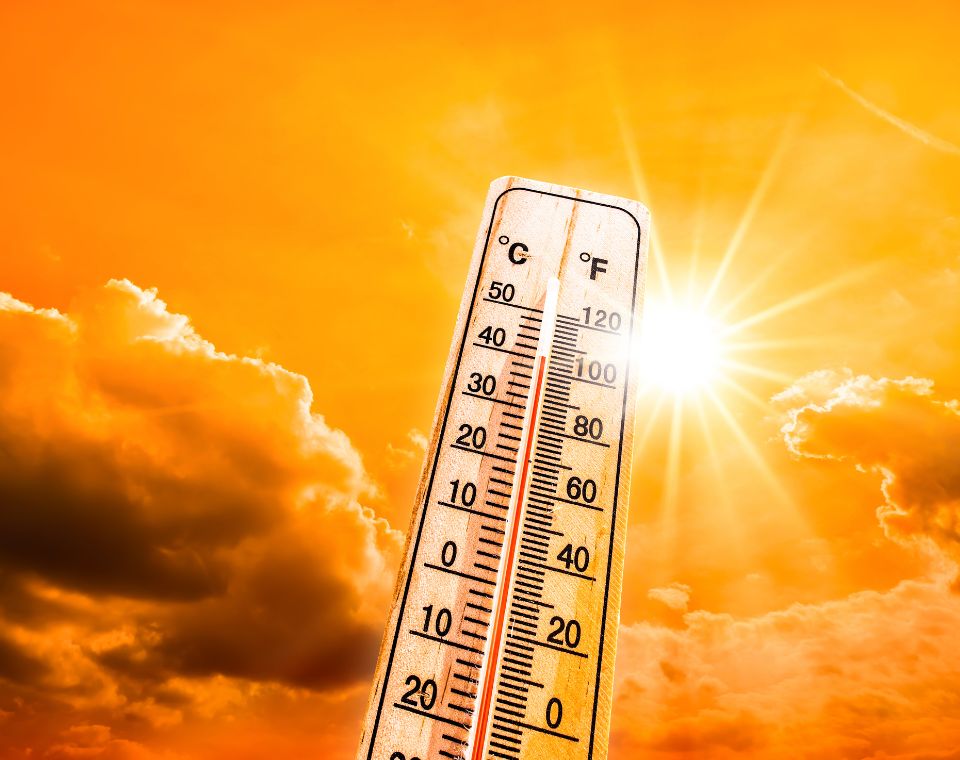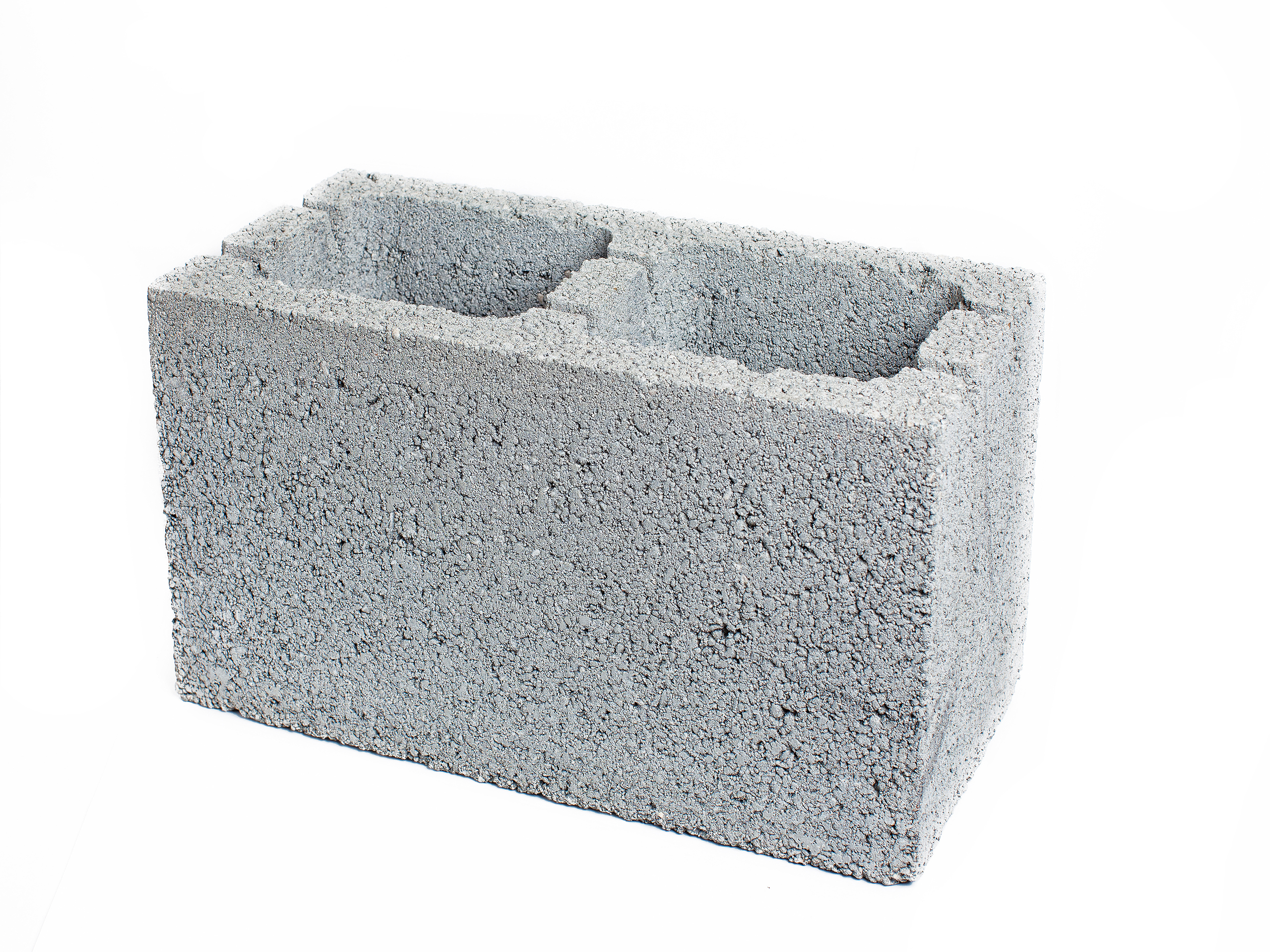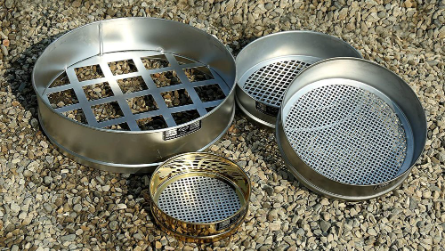If you weren’t around way back when that song was released, you might have heard it on a golden oldies station. Sly and the Family Stone released the single in the summer of 1969, and the song quickly rose on the Billboard charts to top out at #2 in October of that year. The lyrics celebrate balmy summer weather and the fun of those carefree days. However, summer weather should also be treated with respect, because summer’s heat can easily turn deadly.
Our industrial hygiene articles typically focus on the workplace, and high heat can certainly be a concern in many occupational settings. But summer heat, just like heavy rain, high winds, tornadoes, earthquakes, and wildfires, can affect us all. According to the Centers for Disease Control and Prevention, an average of 702 deaths associated with heat-related illnesses occur annually in the United States. Even more tragic is that most of these deaths are entirely preventable. And with temperatures steadily rising due to climate change, this figure will likely climb higher in the years to come.
There are several heat-related illnesses, and they vary in severity. Heat stress is a term that encompasses a broad range of conditions related to the body’s response to exposure to heat when you’re not properly prepared for that exposure. Heat exhaustion, heat stroke, and heat cramps are the most common ailments associated with summer heat. While the obvious cause of heat-related illnesses is high temperatures and relative humidity, exacerbating factors can include working in direct sun, limited air movement, as well as an individual’s physical condition, medication, or diet. Table 1, based mainly on information found on the CDC’s Natural Disasters and Severe Weather website, lists some signs and symptoms of heat stress-related illnesses, appropriate responses, and preventative measures.
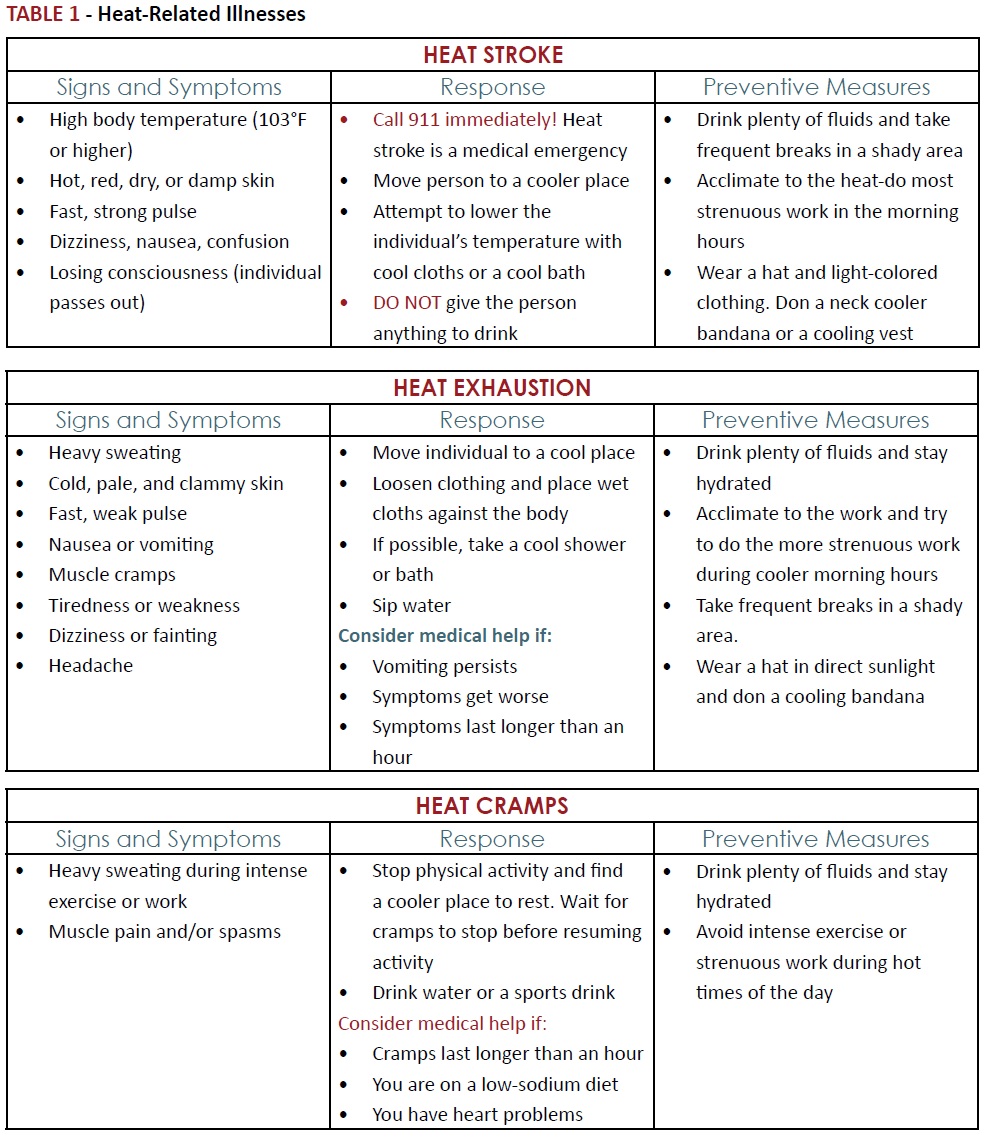
The best strategy for heat stress is to avoid it altogether. Forethought about upcoming activities and an awareness of weather forecasts are helpful. Several specific actions to keep in mind as you prepare for summertime work or other outdoor activities are presented below (in no particular order):
- Know before you go – be aware of the weather and the forecast temperature highs for any given day that you will be in the heat
- Modify your exposure hours if possible
- Drink plenty of fluids, both the day before and during the Fluids should consist primarily of water; caffeine and heavily-sugared drinks should be avoided
- Avoid excessive alcohol the night before any outdoor activity is planned
- Allow yourself to become acclimated to the During the early summer, spend a few hours in the heat, preferably in the morning, and slowly increase the amount of time you spend outside
- Wear a hat and light-colored clothing when in direct sunshine
- Take plenty of breaks and take them in the shade, out of the heat if possible
- Learn the early warning signs of heat stress and know when to slow down or stop
One last important piece of information to impart is understanding the heat index. The heat index is based on the relationship between air temperature and relative humidity. The National Weather Service Heat Index Chart offers the means to quickly calculate the heat index if you know the temperature and relative humidity. While the chart has come under some late scrutiny, it is based on valid principles. Understanding the impact that higher temperatures combined with higher humidity can be useful in calculating the potential risks of heat illness on any given day.
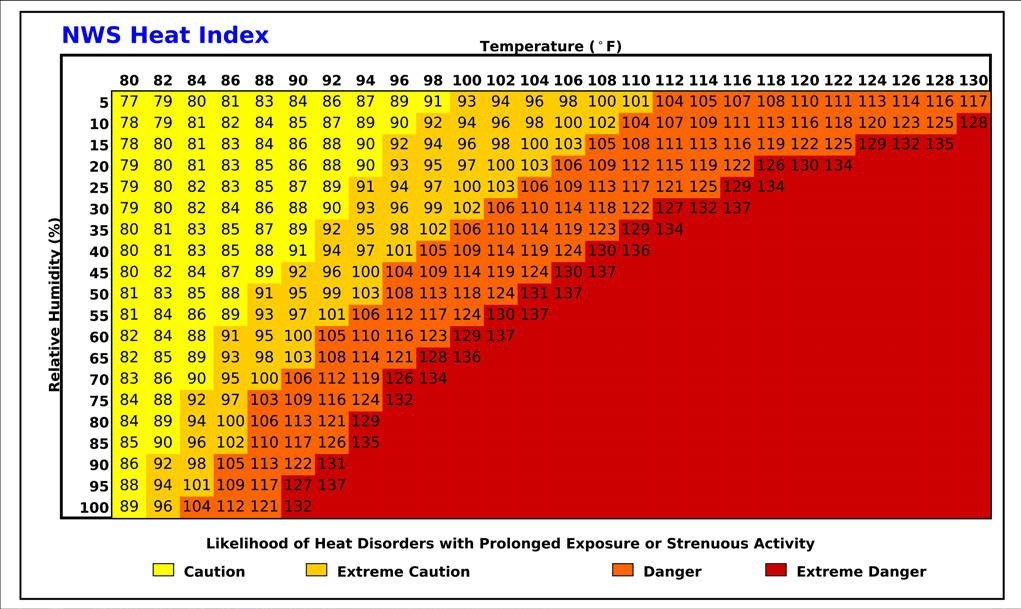
Look to the Y axis for relative humidity and the X axis for temperature in degrees Fahrenheit. For example, if the relative humidity is 70% and the temperature is 90 °F, the heat index is 105. Note that 105 is coded Orange; according to the table, one could expect “Danger.” More simply stated, an increased likelihood of heat disorders occurs with prolonged exposure to higher heat and humidity, especially when coupled with strenuous activity.

